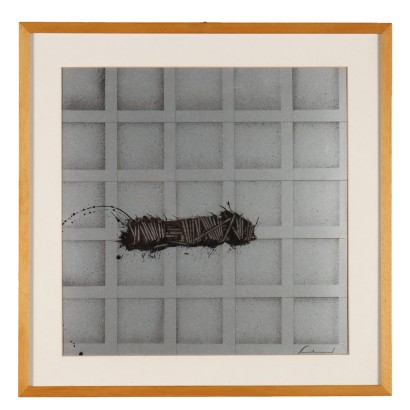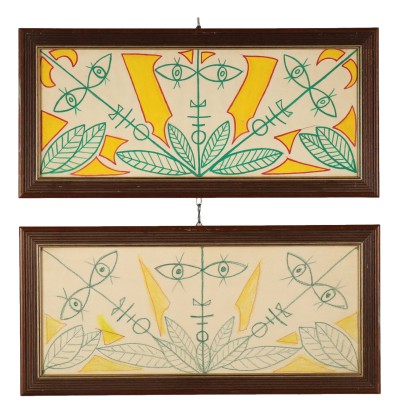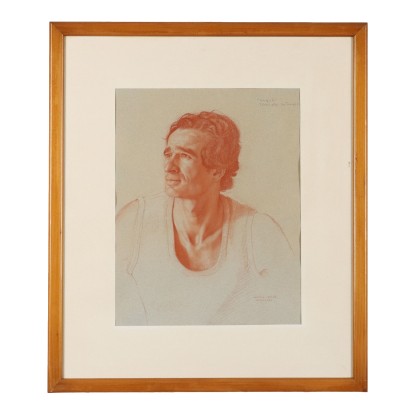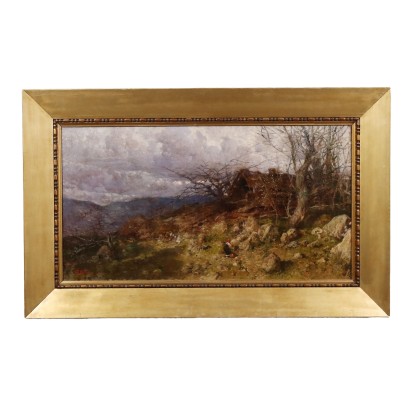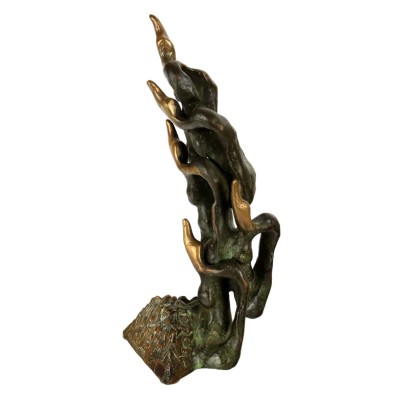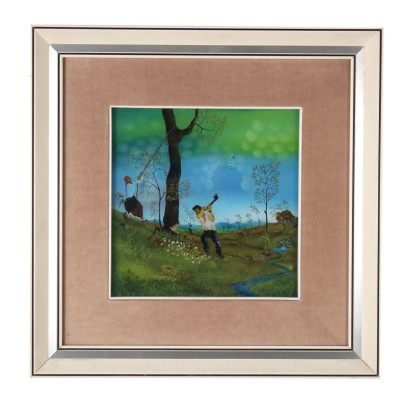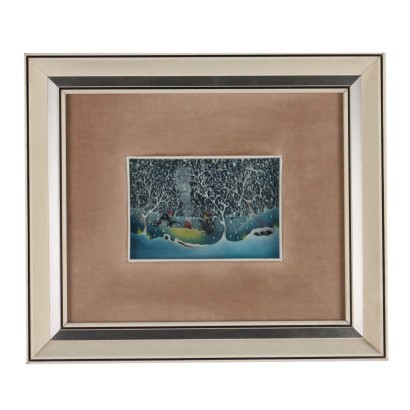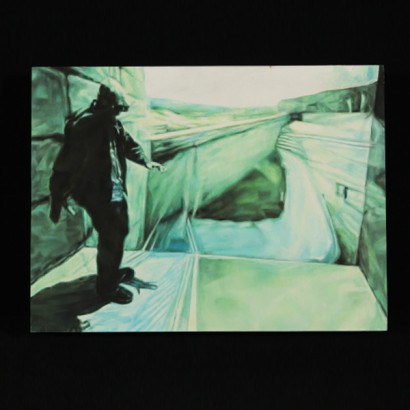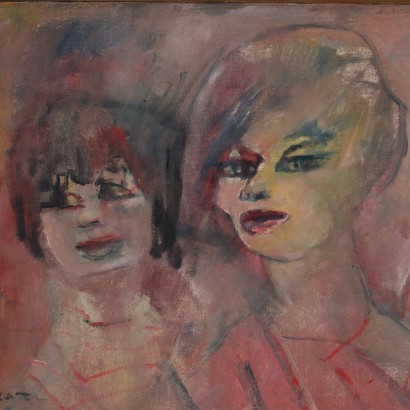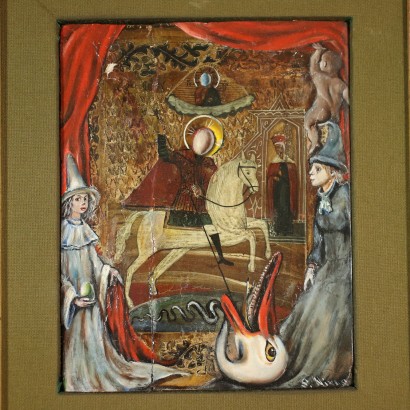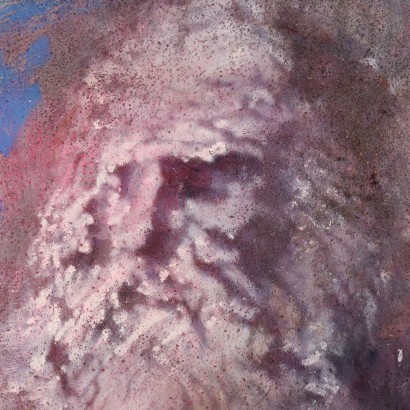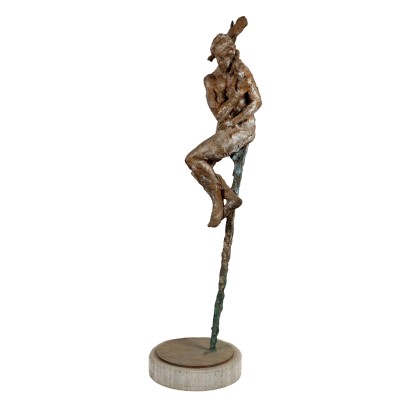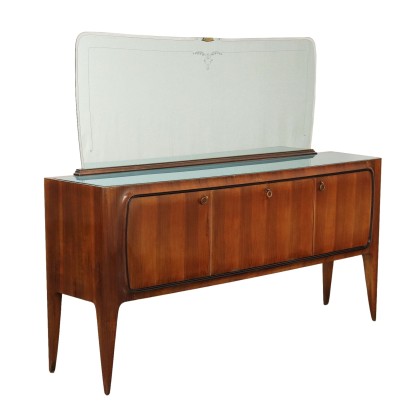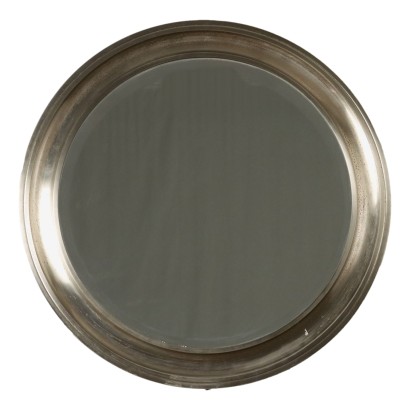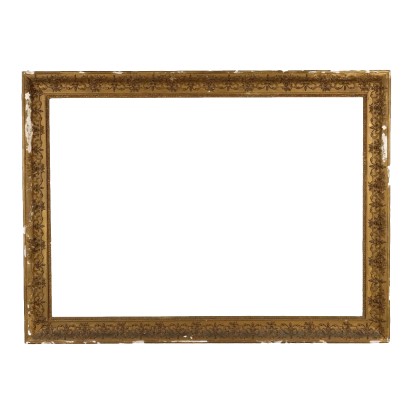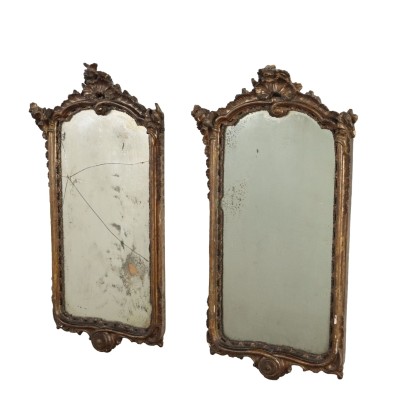Contemporary Painting A. Scanavino Acrylic on Cardboard 1971 - Untitled, 1971
Features
Untitled, 1971
Artist: Emilio Scanavino (1922-1986)
Artwork title: Senza titolo
Age: Contemporary
Subject: Abstract Composition
Artistic technique: Painting
Technical specification: Acrylic Paint
Description : Senza titolo
Acrylic on cardboard. Signed lower right. Accompanied by Authentication on photo signed by the artist, with stamp of the Bolzicco Gallery of Portogruaro (VE). Published in the General Catalog of Electa editions (vol.II, page 535, n. 230). Emilio Scanavino, a painter and sculptor originally from Genoa, after a figurative beginning, gave his painting post-cubist characteristics, with the forms becoming progressively stylized until they dissolved completely in the early 1950s. In '54 the stylized knot began to appear in his canvases, which became his characteristic sign, characterizing all his subsequent production. In the production of the 70s, to which the work presented here belongs, the "knot" becomes perfectly delineated and recognisable, expressed in disturbing shapes, sometimes threatening and stained with blood red. The work is presented in a frame.
Product Condition:
Product in very good condition which may show minor traces of wear; it may have undergone restoration work carried out by an expert. We try to present the real state as fully as possible with photos. If some details are not clear from the photos, what is stated in the description applies.
Frame Size (cm):
Height: 57
Width: 57
Depth: 3
Artwork dimensions (cm):
Height: 47
Width: 47
Additional Information
Artist: Emilio Scanavino (1922-1986)
Emilio Scanavino, born in Genoa in 1922, was an Italian painter and sculptor. In 1938 he enrolled at the Liceo Artistico Nicolò Barabino in Genoa, where he met Professor Mario Calonghi, a figure of great cultural stimulus for his early education. In 1942 he had his first solo exhibition at the Salone Romano in Genoa. In the same year he enrolled in the Faculty of Architecture at the University of Milan. In 1946 he married Giorgina Graglia. In 1947 Scanavino went to Paris for the first time where he stayed for some time and had the opportunity to meet poets and artists such as Edouard Jaguer, Wols, Camille Bryen. In 1951, on the occasion of a personal exhibition at the Apollinaire Gallery, he lived for some time in London, where he met and frequented Philip Martin, Eduardo Paolozzi, Graham Sutherland, Francis Bacon. In 1954 he exhibited at the XXVII Venice Biennale and the following year he received the Graziano Prize. In 1963 he received the La Spezia Prize just as Carlo Cardazzo, who had supported Scanavino for seven years with the commitment of a friend, suddenly died: this loss deeply affected the painter. Renato Cardazzo continued his brother's work as an art dealer and contributed to broadening Scanavino's fame in Italy and abroad. In 1966 at the XXXIII Venice Biennale, where he exhibited again in a solo room, he won the Pininfarina Prize. In 1968 he moved his studio to Calice Ligure. Numerous artists settled in this location and formed a small community around Scanavino. In 1970 he received the Grand Prix at the Menton Biennial. The collector Franco Castelli, director of "L'uomo e l'Arte", became his friend and supporter. In 1971 he successfully passed a delicate operation: the recovery gave rise to a new creative phase in his painting. He traveled to Belgium, France and Germany while continuing to live and work in Calice Ligure. Between 1973 and 1974 the Darmstadt Kunsthalle presented his vast anthological exhibition which, with some variations, moved to Venice at Palazzo Grassi and then to Milan at Palazzo Reale in 1974. In 1982, despite the progressive worsening of the disease, he continued to work and have an intense exhibition activity in public and private spaces and in 1986 he was invited to exhibit at the Rome Quadrennial. He died in Milan on 28 November 1986.Age: Contemporary
ContemporarySubject: Abstract Composition
Artistic technique: Painting
La pittura è l'arte che consiste nell'applicare dei pigmenti a un supporto come la carta, la tela, la seta, la ceramica, il legno, il vetro o un muro. Essendo i pigmenti essenzialmente solidi, è necessario utilizzare un legante, che li porti a uno stadio liquido, più fluido o più denso, e un collante, che permetta l'adesione duratura al supporto. Chi dipinge è detto pittore o pittrice. Il risultato è un'immagine che, a seconda delle intenzioni dell'autore, esprime la sua percezione del mondo o una libera associazione di forme o un qualsiasi altro significato, a seconda della sua creatività, del suo gusto estetico e di quello della società di cui fa parte.Technical specification: Acrylic Paint
Other customers have searched:
Arte Contemporanea, tecnica mista, composizione astratta, arte novecento, arte contemporanea, arte astratta, pittori italiani quadri olio su tela paesaggi..
Se sei un appassionato d'arte, non perderti i nostri approfondimenti sul Blog Arte Di Mano in Mano e su FineArt by Di Mano in Mano - Arte:
Leggi di più
Ecco alcuni tra i principali articoli:
Vedute
Falsi nell'arte antica
Un messaggio di fiducia per ripartire
La potenza espressiva dell'arte figurativa etiope
Breve Storia del Collezionismo
Giorgio Upiglio, maestro dei libri d'artista
Matthias Withoos detto "Calzetta bianca"
San Rocco pensaci tu - Classic Monday
Sapevi che l'arte può essere anche un ottimo investimento (e non solo per grandi portafogli)?
L'Arte tra Collezionismo e Investimento
FineArt: Arte come investimento
Dai un'occhiata alle nostre rubriche di divulgazione sull'arte:
Epoche
Lavorazioni e tecniche
Mostre ed Eventi
Protagonisti
Leggi di più
Ecco alcuni tra i principali articoli:Vedute
Falsi nell'arte antica
Un messaggio di fiducia per ripartire
La potenza espressiva dell'arte figurativa etiope
Breve Storia del Collezionismo
Giorgio Upiglio, maestro dei libri d'artista
Matthias Withoos detto "Calzetta bianca"
San Rocco pensaci tu - Classic Monday
Sapevi che l'arte può essere anche un ottimo investimento (e non solo per grandi portafogli)?
L'Arte tra Collezionismo e Investimento
FineArt: Arte come investimento
Dai un'occhiata alle nostre rubriche di divulgazione sull'arte:
Epoche
Lavorazioni e tecniche
Mostre ed Eventi
Protagonisti

